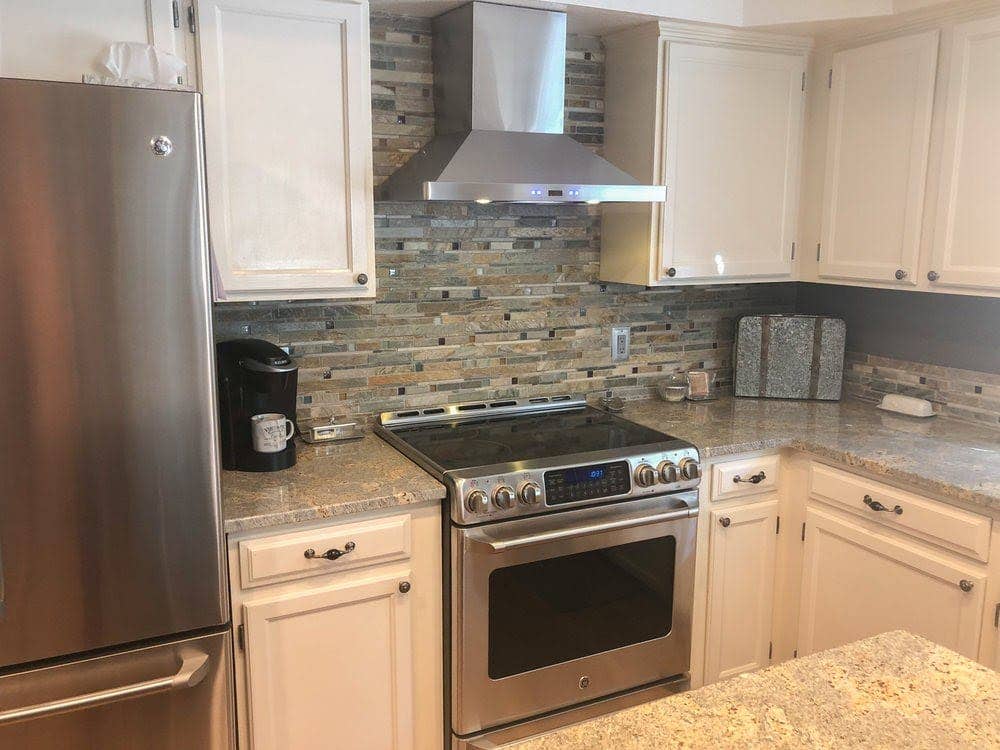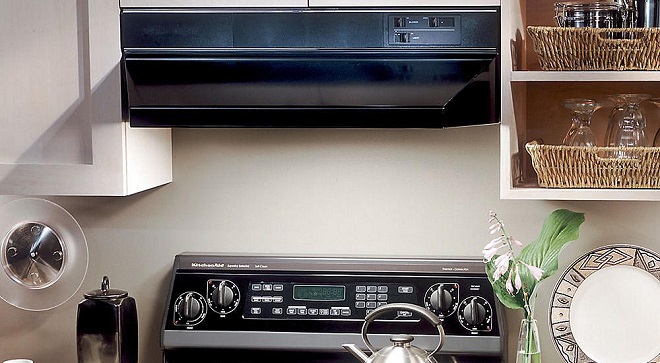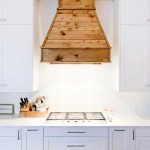If your cooker hood is not working, check if it’s properly plugged in and the fuse isn’t blown. Then, clean the filter and check for any damage to the motor or fan blade.
Cooker hoods are an essential part of every kitchen to remove excess heat, steam, and odors while cooking. However, faults in the hood may lead to unpleasant odors and increased steam and heat in the kitchen. If you’ve noticed your hood is not working, you should quickly diagnose the problem and resolve it to avoid further inconvenience.
In this article, we’ll look at some common reasons why cooker hoods stop working and give you some tips on how to fix them. So, let’s dive in and learn how to troubleshoot your cooker hood and get it back to proper working condition.

Credit: www.prolinerangehoods.com
Why Is My Cooker Hood Not Working? Troubleshoot Your Way To A Working Appliance
What Are The Signs That Your Cooker Hood Is Not Working?
Before diving into troubleshooting your cooker hood, it’s important first to recognize the indications that it’s not working correctly. Here are the common signs that you should look out for:
- Noisy operation: If your cooker hood is making a lot of noise, it could be an indication of an issue, including a loose fan or a worn-out motor.
- Excessive smoke or bad smells: Cooker hoods serve to eliminate smoke, steam, and bad odors from your kitchen. If you notice an excessive amount of smoke or unpleasant smells, it could mean your appliance isn’t functioning correctly.
- No suction: The primary role of a cooker hood is to suck cooking steam and smoke out of your kitchen. If there’s no suction, it could mean that there’s an obstruction in your cooker hood, preventing it from working well.
Importance Of Understanding The Problem Before Finding Solutions
Before taking any action, it’s essential to identify the problem with your cooker hood. By comprehending what’s wrong, you’ll be able to solve the issue effectively. Here are some reasons why you should understand the root cause before finding solutions:
- You’ll save time: Trying to fix a problem without knowing what’s wrong can be frustrating. It can lead to a waste of time, as you’ll be trying every solution you can think of without success.
- You’ll save money: If you start buying new parts and components for your cooker hood before identifying the issue, you’ll end up spending more money than necessary.
- You’ll gain knowledge: Understanding the issue can help you avoid similar problems in the future.
How To Troubleshoot Your Cooker Hood
Once you’ve identified the problem with your cooker hood, it’s time to troubleshoot it. Here’s how to go about it:
- Turn off the power supply: Before you start to troubleshoot your cooker hood, ensure that you’ve switched off its power source.
- Clean your appliance: One of the primary reasons cookers hoods stop working is due to dirt and grease buildup. Use a cleaner to wipe off all the grime and dirt that have accumulated over time.
- Check your motor: The fan motor of a cooker hood can wear out over time, affecting the performance of your appliance. Check if the motor is working correctly.
- Check the filters: If your cooker hood has filters, ensure that they are clean. Dirty filters can obstruct airflow, making your appliance less efficient.
- Check for blockages: Blockages can prevent your cooker hood from absorbing steam and smoke correctly. Inspect the ductwork, and the outlet where the hood vents outside.
By following these troubleshooting tips, you’ll be on your way to having a working cooker hood in no time.
Remember, before trying any significant repairs or replacing parts, consult with an expert who has experience fixing cooker hoods.
Clean The Filters
Explanation Of How Filters Work In Cooker Hoods
Cooker hoods are equipped with filters that trap grease, smoke, and other pollutants generated while cooking. There are two types of filters: metal and charcoal. Metal filters are washable and reusable while charcoal filters are not washable and need to be replaced.
Importance Of Maintaining Clean Filters
Clean filters are essential for the effective functioning of your cooker hood. Dirty filters can clog and reduce the airflow, leading to poor ventilation, and impairing the cooker hood’s efficiency. Over time, grease and dust accumulate on filters, increasing fire hazards and unpleasant odors in your kitchen.
Step-By-Step Guide To Cleaning Filters
Cleaning metal filters is a simple process that can extend the lifespan of filters and cooker hood. Follow these steps for effective cleaning:
- Turn off the cooker hood and unplug it from the mains.
- Remove the metal filters from the cooker hood.
- Soak the filters in hot water and dishwashing soap to help loosen the stubborn grease.
- Use a soft brush or sponge to scrub the filters, but avoid using abrasive cleaners as they can damage the filters.
- Rinse the filters thoroughly in hot water.
- Allow the filters to dry completely before putting them back in their place.
If you have a cooker hood with charcoal filters, you’ll need to replace the filters periodically. Check the manufacturer’s instructions for guidance on when to replace charcoal filters.
How Often Should You Clean The Filters
The frequency of cleaning your cooker hood filters depends on how frequently you use the cooker hood. As a general rule, it’s recommended to clean metal filters every two months or twice a year, for moderate to heavy use. If you cook frequently or use your cooker hood daily, consider cleaning it more frequently.
Follow the manufacturer’s guidelines for the optimal maintenance of your cooker hood filters.
Keep in mind that cleaning the filters is an easy and effective way to maintain the efficiency of your cooker hood and create a safe, pleasant kitchen environment.
Check The Motor And Fan
Overview Of The Motor And Fan Components In A Cooker Hood
Cooker hoods have two critical components – the motor and the fan. The motor drives the fan, which helps extract cooking fumes, smoke, and steam. The fan circulates the air, thus providing better ventilation. These components work together to improve the air quality in your kitchen.
How To Check If The Motor And Fan Are Working
It is easy to check whether the motor and fan are in good condition. Follow these steps:
- Turn on the cooker hood and unplug it.
- Using a screwdriver, remove the cover of the cooker hood to expose the motor and fan.
- Proceed to remove the fan from the motor.
- Plug in the cooker hood and turn it on once more.
- If the motor runs, then it’s working correctly.
- To check the fan, hold a piece of paper close to the vent beneath the hood. If the fan is working flawlessly, the paper should stick to the vent.
Troubleshooting Tips For Motor And Fan Issues
Sometimes, the motor and fan components may not work as expected. Here are some troubleshooting tips that you can try:
- Check if there is any obstruction in the fan blades or motor. If any, remove it.
- Use a multimeter to check if there is any electric current flowing through the motor. If the readings are zero, it means that the motor requires repair or replacement.
- If the device produces abnormal noises or emits a burning smell, switch it off immediately and seek professional assistance.
When To Consider Replacing The Motor Or Fan
The life expectancy of a cooker hood motor and fan is influenced by several factors. The intensity of usage, environmental influences, and lack of maintenance are common reasons for the components’ wear and tear. Suppose your cooker hood is not functioning efficiently despite following the above troubleshooting tips.
In that case, you must consider replacing the motor or fan. The cost of repairs could sometimes exceed the cost of replacements. So, always consult with a specialist before making any decisions.
Remember, cleaner air leads to a healthier kitchen environment. Regularly cleaning and maintaining your cooker hood contributes to its longevity and durability.
Inspect The Ductwork
Purpose And Importance Of Ductwork In Cooker Hoods
Ductwork serves as the pathway for the smoke, fumes, and gases produced by the cooker hood to leave your house. Proper ductwork ensures that the air inside your home is clean and healthy to breathe. It also keeps your kitchen and home free from the malodorous effects of cooking.
Cooker hoods equipped with ductwork are advantageous as they extract hot air and harmful smoke from cooking, which is then removed through the ductwork.
Possible Issues With Ductwork And How To Identify Them
Ductwork issues can prevent the smoke and gas from leaving through the ducts in the kitchen. Here are some indications your ductwork may be faulty:
- Smoke or fumes escaping beneath or around the cooker hood instead of passing through the vent.
- The cooker hood motor operates, but there’s no air movement through the vents.
- Unusual sounds or odours coming from the vent or duct.
Step-By-Step Guide To Inspecting Ductwork
Inspecting the ductwork is essential to ensure that it is working correctly. Follow these steps to inspect the ductwork:
- Turn off the power source of the cooker hood
- Remove the ventilation hood filters
- Use a flashlight to check the ducts for any damage or blockages
- Clean, maintain or replace the ducts as required
- Reinstall the ventilation hood filters.
Tips For Maintaining And Cleaning Ductwork
Maintaining and cleaning ductwork is crucial to keep it free of damage and blockages. Here are some tips to keep your ductwork in good condition:
- Clean the ducts at regular intervals to remove the dirt, grease, and dust that accumulate inside them
- Keep the ducts free of blockages by checking them regularly for any debris or damage
- Replace the filters of the ventilation hood according to the manufacturer’s recommendations
- Hire a professional if you notice any significant damage or blockages in the ductwork that you cannot fix yourself.
Inspecting, cleaning, and maintaining your ductwork is a crucial part of ensuring that your cooker hood operates efficiently, keeping your home free from smoke and harmful gases. Ensure that you seek professional help if you encounter any significant faults with the ductwork in your kitchen.
Electrical Issues
Why Is My Cooker Hood Not Working: Electrical Issues
Are you finding that your cooker hood is not working as it should? An issue with the electrical components may be to blame. Here are some troubleshooting tips to try before seeking professional assistance.
Introduction To Electrical Issues In Cooker Hoods
Cooker hoods are motorized units that require electricity to function. Therefore, electrical issues can often cause problems. Whether the cooker hood is not turning on, producing unusual noises, or not extracting fumes, it’s important to understand what signs indicate a possible electrical issue.
How To Identify If Electrical Issues Are The Problem
To determine if electrical issues are to blame for your cooker hood problems, you can try the following:
- Check if the power supply is functioning correctly. Try plugging another appliance into the same socket to ensure that there is a current running to the socket.
- Look for any visible signs of damage such as cuts or tears in the power cord or plug.
- Check the fuses in the plug. If they appear to be burnt out, it could mean that there has been a power surge or electrical failure.
- Try turning on the cooker hood and listen for any unusual sounds. If you hear a humming noise but the fan is not turning, it could indicate an electrical problem.
Troubleshooting Tips For Electrical Issues
If you have identified an electrical issue, there are some troubleshooting tips you can try before calling in a professional. These include:
- Try resetting the appliance by turning off the power supply for a few minutes and then reconnecting it.
- Check the filter. A clogged filter can cause the motor to overheat and trigger an electrical issue.
- Clean the blower wheel and motor blades from grease and grime buildup. Over time, these areas can experience a buildup, which can impede the motor’s movement.
- Call the manufacturer’s helpline. They may be able to provide a solution over the phone or offer advice on the next steps.
When To Seek Professional Assistance
If despite your best efforts, the electrical issue persists, it’s time to call in professional assistance. They can help you with the following:
- Checking the internal wiring of the motor to identify any faults.
- Replacing damaged or corroded components.
- Providing further consultation or inspection of electrical issues.
Electrical issues can cause various problems for your cooker hood, but with the troubleshooting tips listed above, most issues can be resolved without professional assistance. But if the problem persists, don’t hesitate to seek professional assistance to avoid any further damage to your cooker hood.
Frequently Asked Questions Of Why Is My Cooker Hood Not Working
My Cooker Hood Is Not Turning On, What Could Be The Reason?
There may be several reasons why your cooker hood is not turning on. It could be a problem with the electrical connection, a blown fuse, or a malfunctioning motor. It’s recommended that you check the fuse box, power supply, and electrical connections before calling a technician for repairs.
Why Is My Cooker Hood Not Sucking Air Anymore?
If your cooker hood is not sucking air, it could be due to a clogged filter or a blocked vent. You should first try cleaning or replacing the air filter, which may be clogged with grease or other debris. If that does not solve the problem, check the vent system for blockages and clear them if necessary.
What Should I Do If My Cooker Hood Is Making Strange Noises?
Strange noises coming from your cooker hood may indicate a problem with the motor or fan. It could be a loose fan blade or a damaged motor that needs to be replaced. Turn off the hood and unplug it from the power supply, then call a professional technician to inspect and repair the unit.
Why Has My Cooker Hood Stopped Lighting Up?
If your cooker hood light is not working, the first thing you should do is check if the bulb is burnt out and replace it if necessary. If the bulb is fine, it could be a loose connection or a faulty switch.
In that case, it’s best to call a technician for repairs.
How Often Should I Clean My Cooker Hood?
Cooker hoods should be cleaned regularly to prevent the buildup of grease and other debris that can impact their performance. Most manufacturers recommend cleaning the hood and its filter every three to six months, depending on the frequency of use.
Conclusion
After identifying the root cause of your cooker hood malfunction, you will often find that it’s a simple fix that can save you from having to replace your entire appliance. Regular maintenance, cleaning, and checking for blockages are essential to ensure that your cooker hood works effectively and efficiently for years to come.
However, if you have tried all possible solutions and your appliance still fails to function, it’s time to seek the help of a professional. Different issues may require different levels of expertise, and attempting a diy fix on complex problems might do more harm than good.
Remember always to prioritize safety and to attend to all faults right away to avoid further damage and costly repairs. By practicing proper care and maintenance, you can maximize your cooker hood’s lifespan and keep it performing at its best.

Freda is a passionate foodie and kitchen gadget enthusiast. With over 10 years of experience in the culinary industry, Freda brings her expertise in testing and reviewing kitchen gadgets.





